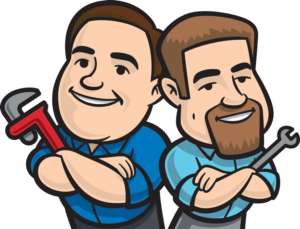[et_pb_section admin_label=”section”]
[et_pb_row admin_label=”row”]
[et_pb_column type=”4_4″][et_pb_text admin_label=”Text”]No one wants to experience problems with their home’s HVAC system when it’s needed most. That’s why heating and air conditioning professionals, as well as consumer advocates, routinely recommend home heating systems be inspected and serviced before the cold weather arrives with a vengeance.
There are seven things a homeowner can do now to be better prepared for anything Mother Nature throws their way. Take the time now to make sure you’re ready for the weather.
1. Replace the Furnace Filter
Furnace filters are all too easy to ignore, and dirty filters mean a furnace must work much harder to keep a home warm. Some filters are designed to be cleaned and reinstalled, but most are meant to be discarded once they’re dirty.
If you’re unsure where your furnace filter is located, now is the time to find it. As a rule, the filter will be in the furnace itself, but many homes now have filters at a central cold air return vent. Clean or replace the filter as needed, and expect to replace or clean your home’s furnace filters at least once per month.
2. Inspect and Clean the Furnace Heat Exchanger
This step is best if left to a professional. If you wish to inspect the heat exchanger yourself, follow these steps. If your home’s furnace filter is in the unit itself, look at the heat exchanger when you replace the filter. As a rule, there will be an inspection cover that’s easy to move to get a look at the exchanger.
The idea is to spot any cracks in the exchanger, as cracks are likely to leak dangerous carbon monoxide gasses. The carbon monoxide will then be moved through the ducts to all areas of the home. Use a small mirror on a long handle to get a better look at those hard-to-see areas of the heat exchanger. If you spot anything suspicious, contact a heating expert from Boulden Brothers for advice immediately.
Use a wet or dry vacuum to clean the area around the heat exchanger. Keeping everything clean minimizes the amount of dust that circulates when the furnace is in use.
3. Clean and Lubricate the Blower Motor and Fan Assembly
The blower motor and fan should also be cleaned now. Again, it’s important to remove all dust and other contaminants that could spread through the home’s ductwork.
Many newer furnace motors are sealed and don’t require lubrication, but older systems and certain newer models do. Check your owner’s manual for any fan and blower lubrication requirements.
4. Check the Thermostat
Newark, Delaware Furnace Repair experts recommend the thermostat be checked to make sure it responds properly to commands and activates the heating system correctly. In many instances, homeowners find older thermostats don’t start and shut off the home’s heating system properly. If there is any question about a thermostat’s performance, now is the time to contact an HVAC expert for help.
Remember that modern thermostats can now be linked with smart home systems to enable owners to monitor the home’s temperature and change settings remotely. That makes it easier to control heating costs while ensuring a home will be at a comfortable temperature when the family settles in at night.
5. Clear the Areas Surrounding the Furnace and Vents
Remove anything flammable that’s been stored around the furnace. Heating appliances can become quite hot, which means anything that’s too close to the unit could ignite. Never store anything close to the unit, especially any chemicals that are flammable.
At the same time, go through the home and make sure there is nothing blocking the system’s air supply and return vents. Furniture and drapes are common culprits here, so take the time to move those items and anything else blocking the free movement of air through supply and return vents.
6. Clean and Cover the AC Condenser
If your HVAC system includes an exterior AC condenser, that unit should be cleaned and covered every fall. Again, a wet or dry vacuum or specialized cleaning tools can be used to remove dirt and leaves from the unit before it’s covered for the winter.
7. Check or Install Carbon Monoxide Detectors
Every winter, homeowners and their families die from carbon monoxide poisoning. Take a few minutes now to check your home’s carbon monoxide detectors to make sure they’re functioning properly. If you don’t have carbon monoxide detectors, purchase and install them before the heating season starts.
Once you’ve completed those seven steps, test the furnace to make sure everything appears to be working properly. Furnace Maintenance is important for your health and safety so set up a regular inspection routine. If you notice or suspect any problem with your heating system, contact the heating and cooling professionals from Boulden Brothers for help.[/et_pb_text][/et_pb_column]
[/et_pb_row]
[/et_pb_section]
